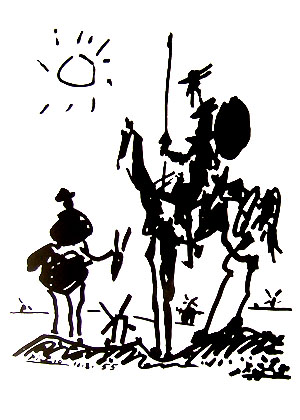Grieving
Grieving is an active process that frees a person up for living again after a loss. A loss in this sense is not just any reversal of fortune but loss of an attachment object--meaning relationships or people, sometimes animals, and possibly places. Grieving is experiencing both sadness and anger, and discharging both with strong expression including sobbing and wailing, and striking ones chest. Mourning is a synonym of grieving that conveys more the expressive aspect.
Of course the ready example of an occasion of grieving is someone's death. In victorian times, it was a ritual to wear black for a time after the death of a loved one. This was a bit mechanical and could be done hypocritically, but it was a recognition that grieving was a biological process that required time. However, while time is necessary, it is not sufficient. The inability to grieve has traditionally been recognized as an emotional disturbance, but it is becoming more common. The inability to grieve arises from a survival orientation, depression, sympathetic shift, and repressed emotion, among other things.
As a practical matter, when anyone that has been shut down starts to increase his or her vitality, a great many ungrieved losses rise to the surface. In fact, since the past cannot be changed, all the problematic elements in ones past can thought of as losses, and grieving is the core of dealing with present effects of one's past. While this may involve adjustments in belief, this is not an intellectual process but an energetic one.
Three Experiences of Suffering
A person's experience of the world is actual, whether or not it seems valid to others. This subjective experience is sometimes called a phenomenology. It is mostly determined by the body's reaction to the environment, with some influence from conscious knowledge and cognition. The body's reaction is sometimes strongly affected, sometimes dominated, by its history. A history of trauma, abuse, or insecurity is especially lingering in the body (I call this disappointment) , and can cause bias in experience that defeats healing. I believe there are three stages to experiencing harm and I describe them below.
Phenomenology of Threat If past threats were not adequately resolved, the threat detection system (amygdala, locus cereleus) will remain on high alert. Structurally the body is in a state of contraction. the autonomic nervous system is in a state of alarm and 'fight or flight' Perception is geared to pick up evidence of threat. All actions then have characteristic defensiveness. However, it may be ascertained that it is normal social friction that is causing the experience of threat. The real threat has been in the past. It is sometimes said that this is locking the barn door after the horse has been stolen. Past and present is not adequately separated emotionally. Others are provoked sooner or later to respond harshly and this seems to confirm the ongoing dangerousness of the world. Grieving cannot take place because there is no safety.
Phenomenology of Resentment The next stage is the ability to place injuries 'in the past' but not really accepted as having happened in a final sense. This is a type of denial. Considerable energy is spent in denying the realness or legitimacy of what has happens, so that reminders of what happened, are experienced as the injury happening again (that is where the term resentment comes from, “to feel again”) There is tremendous bitterness and behavioral volatility. Grieving cannot happen because it requires acceptance.
Phenomenology of Loss A loss is appreciated if the injury is understood to be the past but effects are still felt in the present. Neither defensiveness nor denial is needed, and vulnerability can be shown. Only losses can be grieved. Threats and resentments cannot be. Recognition of loss and grieving can only happen in relative safety. The external situation must actually be safe, but that is not enough. The would-be mourner has to feel safe enough in his or her own body.
